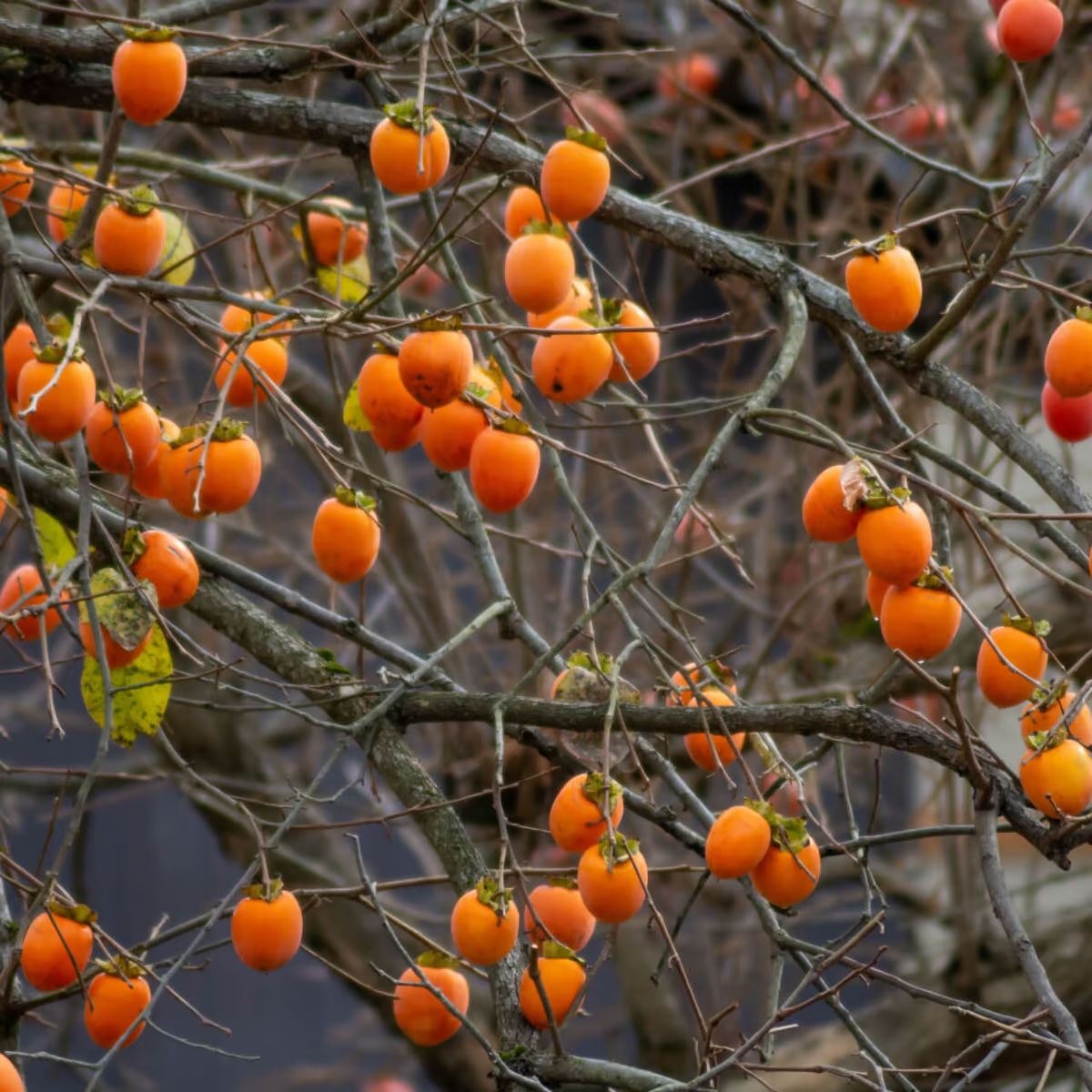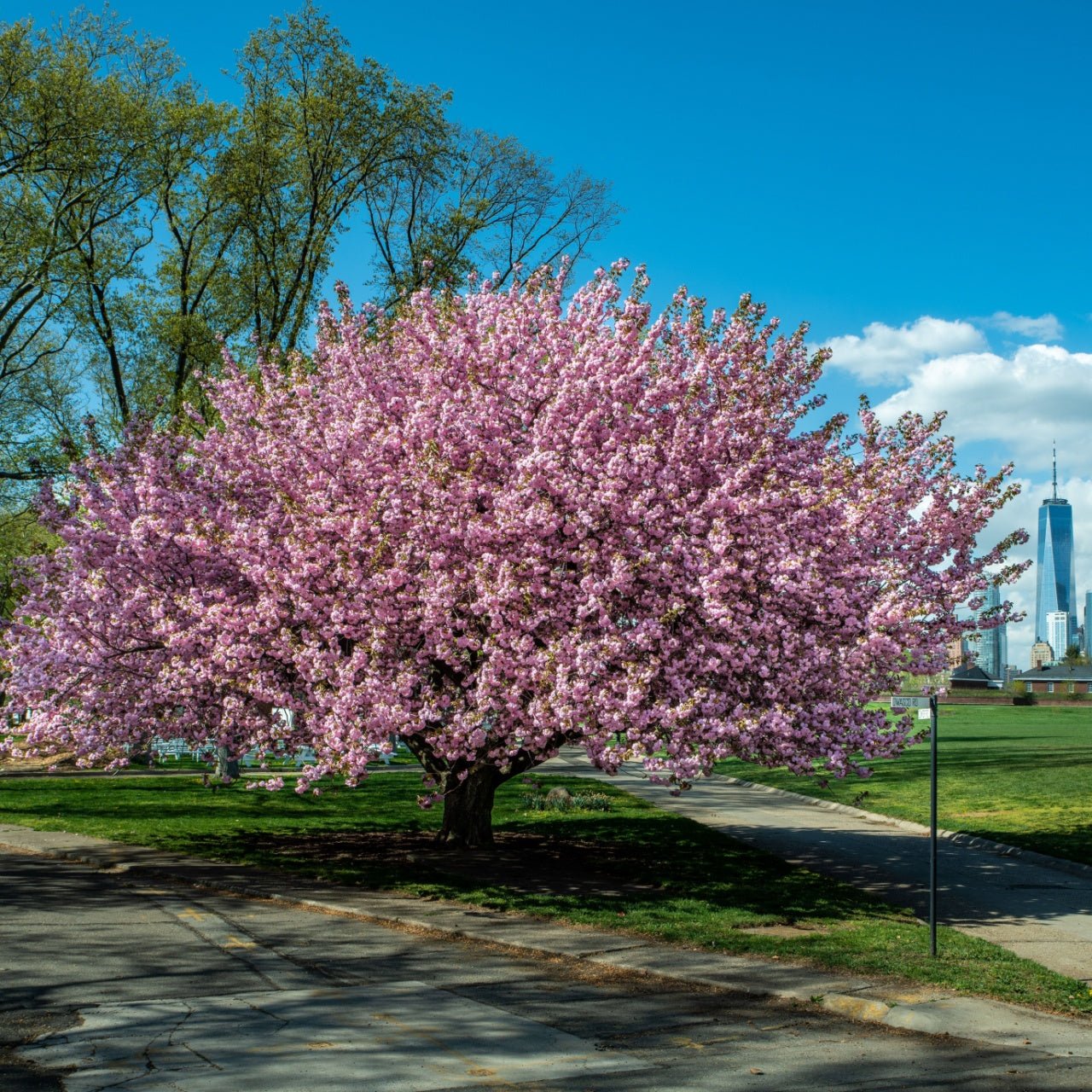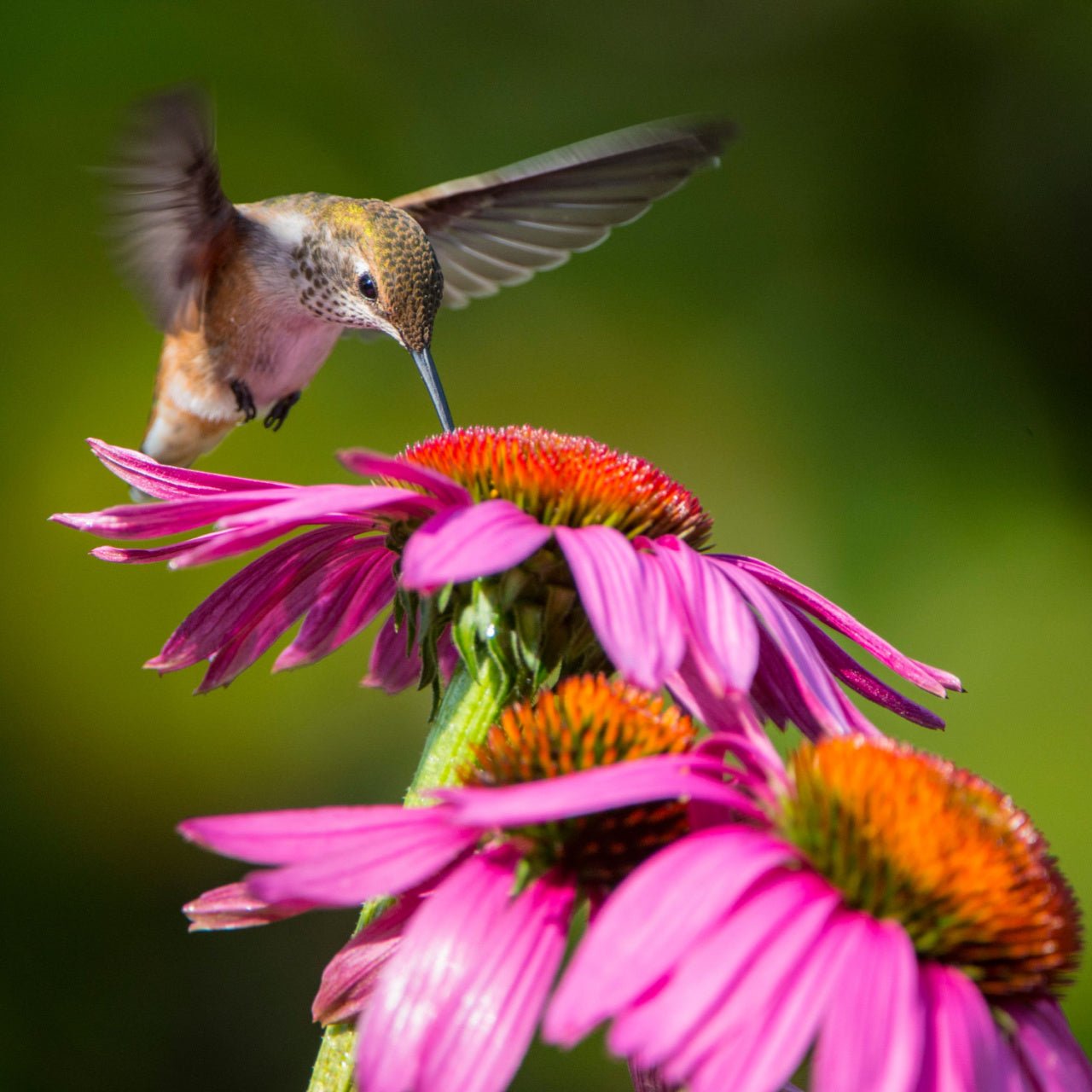



Fruiting Persimmon Trees
Attracts wildlife to your garden
Beautiful fall foliage colors
Low maintenance and drought-tolerant
Thrives in
ZONE 4ZONE 5ZONE 6ZONE 7ZONE 8ZONE 9This plant ships:
November 20251 Year Guarantee on all plants
Fruiting Persimmon Trees - Diospyros virginiana
The Persimmon is a common fruit, widely regarded as a gem for its delicate, sugary sweet flavor. However, there are two types of Fruiting Persimmon Trees that bear this fruit. The Japanese Persimmon Tree and the American Persimmon Tree, which is native to the southeastern United States. Persimmons are a rather polarizing fruit because they are extremely soft when ready to eat–too soft to be sold at markets or in stores without bruising. But in a garden where they can be picked and eaten within minutes, they are utterly perfect.
Plant Details - Fruiting Persimmon Trees
Family: Ebenaceae
Light Requirement: Full sun, partial sun
Water Needs: Moderate
Height: 30-80 ft
Spread: 20-35 ft
Growth Rate: Moderate
Soil Preference: Clay soil
Season of Interest: Spring/Summer, Fall
Flower Color: Gold/Yellow
Fruit: Persimmons
Wildlife Value: Mammals, birds, insects, Honeybees
Notable Characteristics - Fruiting Persimmon Trees
This low-growing, shrub-like tree has a mass of interwoven branches that make a lush canopy of foliage. Its leaves are oval-shaped and long, with a glossy, dark green finish. The bark is thick and dark grey with deep grooves; a somewhat scaly texture similar to oak tree bark. In autumn, the green foliage turns to a sea of brilliant orange, yellow and red, while the fruit grows and ripens. The bright orange fruit of Fruiting Persimmon Trees can even hang on to the branches after the leaves have fallen off, giving the tree a mysterious, haunting look.
Landscape and Maintenance
This magnificent tree enjoys full sun, but can thrive in partial sun as well. It grows best in well-draining, fertile, loamy soil that is even slightly acidic. Fruiting Persimmon Trees don’t need much water, only around an inch per week which is a very moderate rate, and can even be drought tolerant. As a southwestern United States native, this gorgeous tree can withstand a variety of climatic conditions and is fairly cold hardy. The beautiful fall colors and late season ripening fruit make this tree a perfect addition to your garden and your kitchen.
This Is How Your Plants Will Look upon Delivery

Bloom Season
Summer
Bloom/Foliage Color
White
Height at Maturity
Over 25 Feet
Care
Persimmon trees prefer well-drained soil and regular watering, especially during dry periods. They should be trimmed in late winter to keep shape and remove dead or diseased wood. Annually, they should be fertilized with a balanced fertilizer to sustain healthy growth and fruit production.
Plant Reproduction
Persimmon Tree spreads through seeds, sprouts, and suckers
Plant fruit trees in early spring or late fall when the weather is cool. Choose a sunny location with well-drained soil. Dig a hole twice the width of the roots and double as deep as the root system. When the tree is put in the hole, make sure the graft union (a noticeable bump where the tree was grafted above the rootstock) is above the soil line. Put dug-out soil around the tree roots, gently firmly remove air pockets, and water thoroughly.
Water young trees regularly, especially during dry spells, to establish a robust root system. Once established, water deeply and less frequently. Prune fruit trees yearly during the dormant season to remove dead or diseased wood, improve air circulation, and shape the tree for optimal fruit production. Fertilize in early spring and thin the fruit when necessary to prevent overbearing, which can stress the tree and reduce fruit quality.
Shipping date depends on the date displayed and chosen when you order from the product's page.
We only accept returns on plants verified dead. If you think your plants have died, we offer a 1 year warranty, please use this File a Claim Link to verify dead plants and start with return warranty process.






Delicious Fruit:
Persimmon trees produce sweet, flavorful fruit that is a delight to eat fresh or use in recipes.
Ornamental Appeal:
Beyond fruit, persimmon trees have an attractive, symmetrical shape and striking bark that adds beauty to your landscape.
Nutritional Benefits:
Persimmons are rich in vitamins and antioxidants, providing a healthy and tasty addition to your diet.
Beautiful Fall Foliage:
In autumn, persimmon trees offer stunning, vibrant orange and red leaves that enhance any garden's appearance.
Caring Tips
How do I care for my Fruiting Persimmon Trees?
Each box contains detailed care instructions and information about your product. But here's the basics.
Care Tips
Persimmon trees prefer well-drained soil and regular watering, especially during dry periods. They should be trimmed in late winter to keep shape and remove dead or diseased wood. Annually, they should be fertilized with a balanced fertilizer to sustain healthy growth and fruit production.
Light Requirements
Persimmon trees thrive in full sun, requiring at least six to eight hours of direct sunlight daily for optimal growth and fruit production. While they can handle part shade, complete sun ensures the best development of their sweet, flavorful fruits.
Hardy Planting Zones
4 • 5 • 6 • 7 • 8 • 9
Header
Use this content to share information about your store and products.
Frequently Asked Questions
How often should I water my plants?
How do I know if my plant is getting too much or too little sunlight?
What should I do to prepare my plants for winter?
What are the signs that my plant needs fertilizing?
How can I prevent pests from damaging my plants?
How do I choose the right plant for my climate zone?






